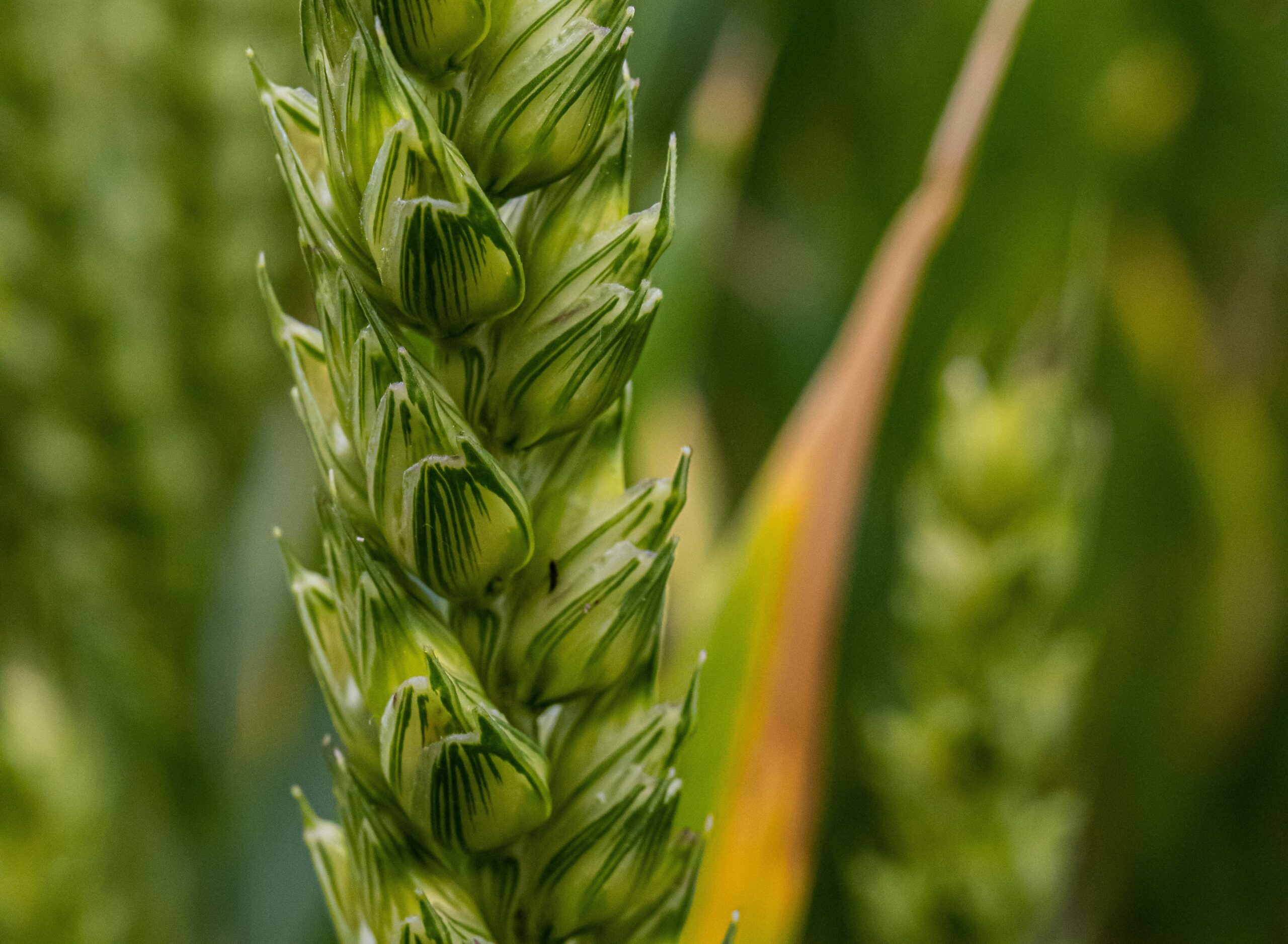
Everyone knows that whole grains are supposed to be better for you, but why? What is so special about the germ and bran, and if they’re so important, why were they ever removed from flour to begin with? Let’s look at a little science and history to answer these questions.
A Bit of Botanical Anatomy
Cereal grains are the seeds of crops like wheat, rice, and oats. Each seed, which we call a kernel or berry, grows on a head inside a protective husk or hull. This inedible outer sheath is removed during harvesting, leaving the edible inner kernel. The kernel is made up of three main parts- the bran, the endosperm, and the germ.
The bran is the outer seed coat of the wheat berry: it makes up about 14% of the total grain by weight. This is where most of the dietary fiber can be found. The endosperm is by far the largest part of the kernel, making up approximately 83% of the mass. The endosperm is like a food storage warehouse for the baby plant that will sprout once the seed germinates. It is where most of the starch and protein can be found. The tiny germ, a mere 3% of the whole, is where we find the actual embryo, the part that will grow into a plant. The germ contains a high amount of fats and oils, as well as some vitamins.
The Milling Revolution
For many centuries, flour was milled with stone mills, producing primarily whole grain flours. When roller mills were developed in the mid 19th century amidst the Industrial Revolution, the new technology allowed millers to more easily separate the three component parts. Extracting only the endosperm to create refined white flour offered several huge advantages. Flour became much more shelf stable, as most rancidity-causing oils are found in the germ. Wheat bran can shatter into coarse particles that interfere with gluten formation, leading to denser bread. Removing the bran and germ eliminated these issues, creating a flour that could be mass-produced and stored almost indefinitely. It was easy to use and baked beautifully, opening up a whole genre of culinary arts to home kitchens.
The trade-off soon became apparent, however. While the endosperm is a valuable source of proteins and carbohydrates, most of the other vital nutrients are found in the bran and germ. By separating them out, industry had created a flour that was nutritionally bankrupt. This fact became apparent in the early 20th century when widespread B-vitamin deficiencies were observed and linked to the white flour that everyone was now using. Mid-century governments began to address this issue by mandating that white flours must be enriched, or fortified, by adding back some of the nutrients lost during refinement. Today, enriched flours in the U.S. are required to add thiamin, riboflavin, niacin, iron, and folic acid.
These measures undoubtedly did much to stem the immediate health crisis, but did nothing to replace other vital elements found in whole grain wheat. Zinc, magnesium, selenium, phytonutrients, antioxidants, vitamin E, and fiber is all lost during refinement; and enrichment does nothing to remedy this. Thankfully, whole wheat flour can easily be made by re-combining the mill streams of modern mills, and it is easily accessible in groceries. Indeed, availability of healthy flours is only increasing in the 21st century as stone-milling regains a foothold in commercial food production, and more and more people seek out the inherent benefits of whole grains in their diet.
The Best of Both Worlds?
Where does this leave us today? The reality is, it’s a great time to be a baker! There are so many quality flours out there to choose from and experiment with. There is no denying that for specialized culinary and pastry arts, refined flours are second to none. But there is also no denying that the health benefits of whole grains are real and proven. Perhaps we should think of white flour a bit like white sugar. There’s nothing wrong with a bit of candy here and there, and in fact sugar is the basic form of fuel for the body. But we all know a diet of pure sugar won’t end well for anyone (except maybe a hummingbird). There are so many other things our bodies need that would be missing. Similarly, there’s nothing wrong with a few cookies or croissants, but allowing refined flour to be our sole source of carbohydrate energy is to leave a tremendous amount of naturally available vitamins, minerals, and other nutrients “on the table”. No wonder the supplement industry is booming! By making whole grains a foundational part of our diets, we can give our bodies the sustainable nourishment they need.



